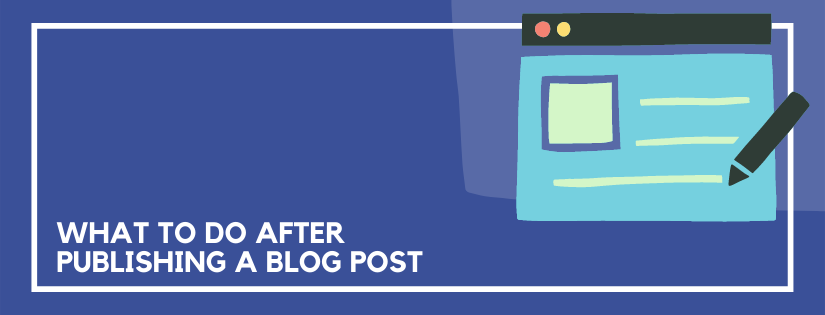Creating consistent blog content is important. You know you need to create a content plan and write your content in batches. But, scheduling your blog post doesn’t mean it’s done. Once the article is published there are a few tasks you’ll want to do to further optimize your content. Here’s what to do after publishing a blog post.
I like to break up my post publishing blog routine into four different categories. They are grouped into: site improvements, internal linking, social outreach, and SEO.
Post-Publish Site Improvements
After you publish a blog article there are a few places on your website that can be modified to help optimize the new post.
Disable and Redirect Any Outdated Version
First, if the article is an update instead of an entirely new article, make sure to disable the old article and add a 301-redirect. Of course, this only applies if the updated version is a completely separate page from the original version.
Embed Media
If there are any additional media sources that can be embedded now that the article is live, such as a podcast or YouTube video, then add them.
Add to Category Pages
Add the article to any relevant category or resource pages. It’s possible your site is set up to do this automatically. If not, just take care of it manually.
Post-Publish Internal Linking
Add Internal Links FROM Related Articles
Review any existing articles on your site that can be related to the new post. If there’s an opportunity to add an internal link to the newest article, do it.
Add Internal Links TO Related Articles
The opposite is true as well. Look at the new blog article. Make sure you are linking out to any existing articles wherever you have relevant content.
Here is a full guide on internal linking that covers both of these processes.
Post-Publish Social Outreach
Create Graphic for Social Media
Use a tool such as Canva to create a graphic to use for a social media post. Whether your primary network is Instagram, Facebook, Twitter, or LinkedIn; a nice graphic will increase the chance people will stop scrolling to read the post.
Schedule Social Media Shares
Schedule out as many social media shares as reasonable for the article. You don’t need to use as many social networks as possible, but schedule shares on the social networks that you have decided work for you and your audience.
The trick is to not share the identical post every time. Instead take a quote from the article, change the headline into a question, or share different subheadings. Find different pieces from the article to share. That way, you can share the same article multiple times, but it isn’t annoying for your biggest fans. And if someone wasn’t interested the first time, maybe they will resonate with a different part of the article and decide to click on a later post.
Space out the shares however you feel comfortable. I normally share about two weeks after the first post and then monthly after that.
Send to Email List
Make sure to send the new article to your email list. Either send it as a one-time blast or add it to a sequence. If you already have a sequence of content you use as your newsletter then add it where it makes sense in your sequence.
If it is timely content related to a current event or if you don’t have an email service provider that allows sequencing, then just send it as a one-time email.
Post-Publish SEO
Confirm Keyword Placement
Confirm the primary keyword appears in the Title, H1 tag, and first paragraph.
Write Meta Description
Confirm there is a meta description with the keyword included.
Track Rank
If you use a tool such as Ubersuggest to track rank, add your new keyword so it is easy to monitor.
That’s it, that’s the routine! Writing content can be time consuming. So, you want to make sure you’re getting as much value out of the content as possible. Following this post-publish task routine will help ensure your content starts ranking and bringing in traffic.
Do you want to listen to this article? Here’s the podcast episode:
